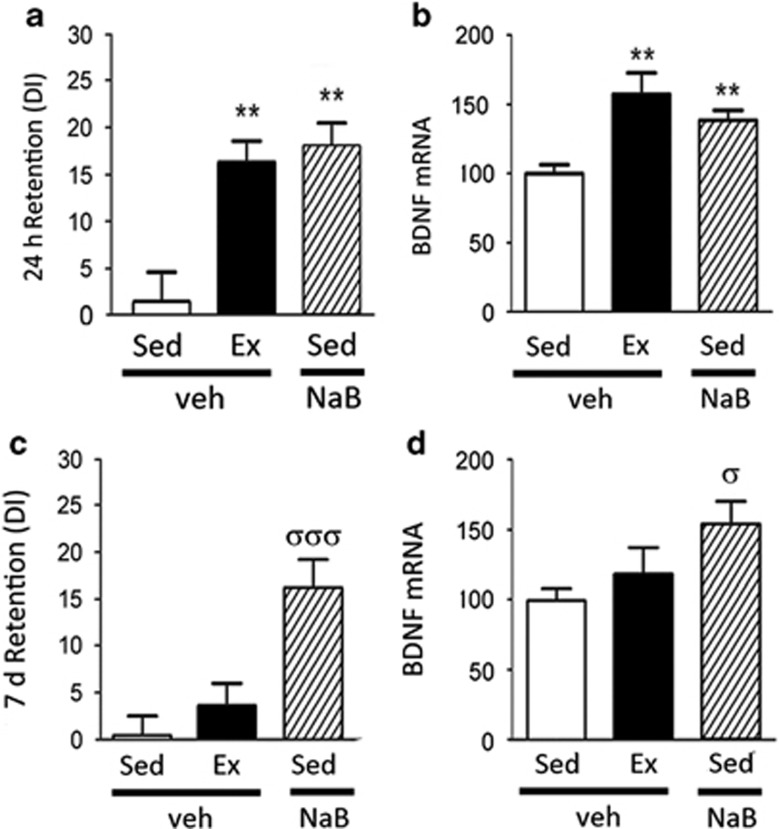Figure 2.
In a subthreshold object location memory (OLM) paradigm, exercise (Ex) improves learning equivalent to sedentary (Sed) mice injected with post-acquisition sodium butyrate (NaB), a histone deacetylase (HDAC) inhibitor. (a) Twenty-four hours after a 3-min acquisition trial, vehicle-treated Sed animals do not show preference for the novel location over the familiar location, as measured by the discrimination index ratio (DI). Following 3 weeks voluntary exercise, Ex animals show marked preference for the novel location to a similar extent as post-acquisition injection of NaB. (b) Quantitative reverse transcription PCR (RT-qPCR) revealed that hippocampal brain-derived neurotrophic factor (bdnf) mRNA levels are increased by exercise and NaB, in parallel with the cognitive enhancement. (c) Effects of NaB on cognition persist 7 days after the acquisition trial, whereas the exercise effects on spatial memory in the subthreshold paradigm eventually decay after daily physical activity ceases. (d) RT-qPCR revealed that bdnf mRNA expression patterns at the 7-day timepoint paralleled the cognitive data across the treatment groups, remaining elevated after NaB treatment but not with exercise. Data are expressed as means±SEM. For the 24-h timepoint: **p<0.01 vs sedentary. For the 7-day timepoint: σp<0.05; σσσp<0.001 vs sedentary.

